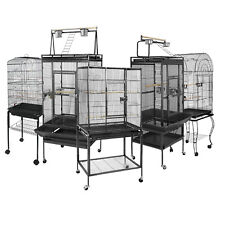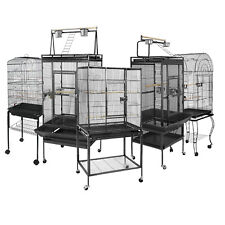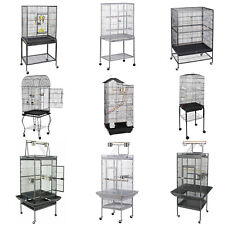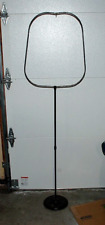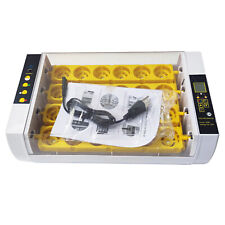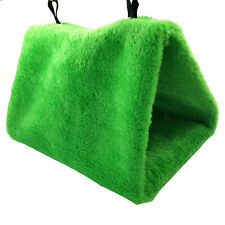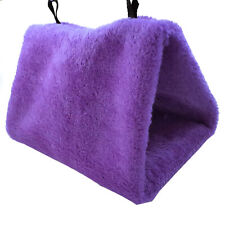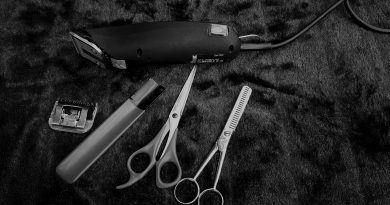Guide: Choosing a Dog or Cat Groomer

You must get as much information as possible from your potential groomer before taking your dog or cat. Most grooming establishments will tell you that the most common question people ask when calling is the cost. This is not very illustrative of the quality of work you can expect: Consider if the groomer is situated in a very high rent area and you will see that they will have to charge more. Remember also, that your groomer will need to expect the animal to make an exact costing.
The grooming experience can be a very stressful time for your pet, and even if he is used to being groomed at home there may be all kinds of tools and machinery with the potential to really scare your pet. Ask your groomer all the questions you want about the actual experience – they will be used to it so don’t worry about putting them out. Some questions you may like to consider are:
- Can you collect your dog within an hour or two of drop off? If not, your pet may be sat in a cage for hours waiting in a queue
- Are all clients (cats or dogs!) up to date with their vaccinations?
- What precautions are in place to prevent the spread of parasites?
- What kind of drying equipment will be used (this has most potential for scaring a nervous animal)?
- Will your groomer ever use sedatives if the animal is being difficult? This should never be used since sedatives should really be prescribed on a per-animal basis by a vet.
If the groomer does not respond to your questions in a friendly, patient manner, it may be time to look elsewhere. If your questions were answered satisfactorily, make an appointment. When you first arrive at the groomer, notice how he/she interacts with your pet. You can judge how comfortable you think your pet will be after seeing how it interacts with your choice of groomer. Next, try to make some observations about the grooming shop itself:
- Does the equipment look new and modern?
- Is there a generally clean and tidy impression?
- Is there a calm atmosphere or are there animals causing chaos?
- Is the temperature in the shop comfortable?
- Is there is any drinking water available to the animals?
In addition, many states require grooming shops to have a permit from the Department of Health which should be prominently displayed. You will normally agree a price for the grooming before the groomer begins. For this, they will need to inspect your pet and discuss your requirements. The price agreed will take the following into consideration:
- The style (clip) you want for your pet. Try to be specific as possible – a picture often helps. You have more of a chance getting the style you want if your dog is groomed frequently and maintained at home between professional groomings.
- Dematting required. If your pet’s coat is not well-maintained, expect your groomer to need to spend extra time preparing your pet’s coat for the cut. If the coat is very badly matted, the only humane solution is often to clip the coat very short.
- Do you want your pet’s nails to be clipped as well?
- Do you want your pet’s ears cleaned? If so, do they need to be treated with specific medication or powder?
- What kind of shampoo do you want your groomer to use? They will usually use standard dog shampoo, but may use special hypoallergenic shampoo if requested
- Do you want your pet to receive a flea and tick dip?
- What additional items do you want? Will the groomer complete the work with decorations (such as bows or nail polish) or cologne?
A well-organized groomer will have a record of the needs above the next time you visit. When you collect your pet, they should be alert and happy to see you. They should be completely dry, smell fresh and should not be panting unusually heavily. Check the pet’s skin for nicks, brush burn, and razor burn. Does the hair style meet your expectations? If not, ask the groomer to make any corrections right then and there, but be careful not to be too pedantic: It is more important if your pet is happy, clean and unharmed.
If you are happy with the first experience, you have found a groomer that you can use regularly. Try to make their life easier by maintaining their coat between visits. Your pet will become familiar with the groomer and will find it more enjoyable each time you visit.
If you find your pet is not very happy, or is panting and hysterical, do not automatically assume the groomer is to blame. Even the calmest of dogs can become upset in a stressful situation. Ask the groomer and see if you sense an honest response about how difficult your dog was to groom and bathe. Keep in mind that it is not always possible to keep every animal calm during what can be a very stressful situation. Ask yourself if your pet has a nervous disposition, and try to judge whether this groomer may gradually make it easier for your pet rather than rushing to find an alternative.

